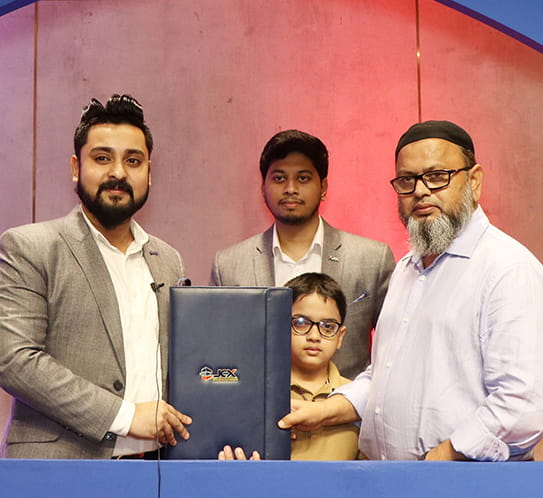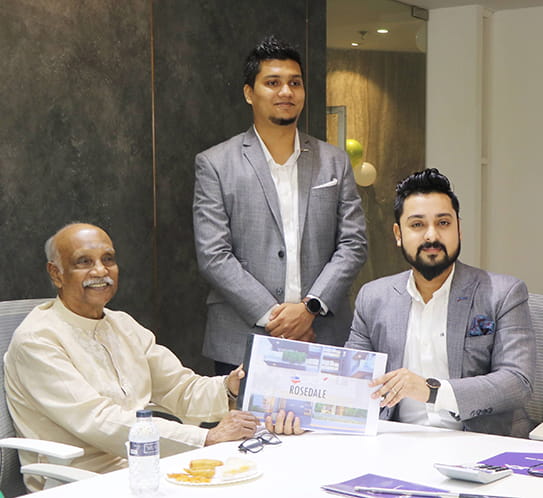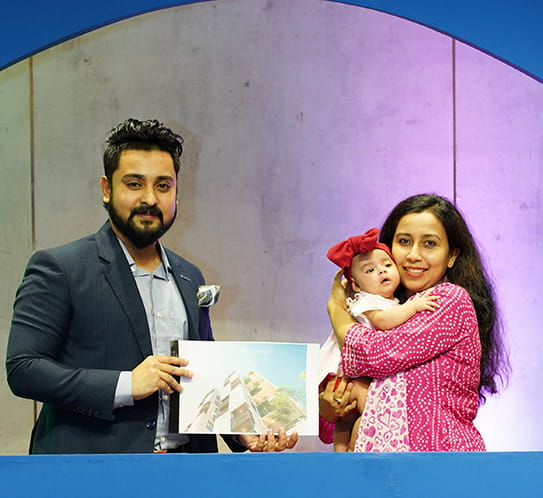I must praise the consultant who worked with us and helped us choose the perfect apartment. He understood our requirements very well and helped us accordingly. Great team!
-Morshed Hossain


JCX Development: Shaping Bangladeshi Architecture with Modern Design
 Modern architecture in Bangladesh is no longer only about how tall a building can rise. Instead of treating rooftops as dead space, many residences now transform them into gardens or calm corners. Shared amenities in modern buildings give residents a chance to interact instead of just passing each other in elevators. This creates a sense of belonging.
Developers all around Dhaka are beginning to embrace this philosophy. Take Grand Residences, where two 16-story towers rise on a large plot yet leave more than half of the space open for greenery, playgrounds, and recreation. Or Nabaratri, which brings light and natural ventilation into every unit while offering rooftop gardens. In cities where space and schedule are both tight, these small design choices help restore balance.
Modern architecture in Bangladesh is no longer only about how tall a building can rise. Instead of treating rooftops as dead space, many residences now transform them into gardens or calm corners. Shared amenities in modern buildings give residents a chance to interact instead of just passing each other in elevators. This creates a sense of belonging.
Developers all around Dhaka are beginning to embrace this philosophy. Take Grand Residences, where two 16-story towers rise on a large plot yet leave more than half of the space open for greenery, playgrounds, and recreation. Or Nabaratri, which brings light and natural ventilation into every unit while offering rooftop gardens. In cities where space and schedule are both tight, these small design choices help restore balance.
 A modern apartment in Dhaka should appear to be in place here. Developers aren’t just borrowing templates and dropping them; they’re translating those principles into something that feels distinctly Bangladeshi. The result is homes and communities that carry international standards.
JCX’s partnership with Japan’s Creed Group is a clear example of this. Japan brings in efficient use of space, clean layouts, and a sharp eye for sustainability. These are lessons learned from designing in populated cities. But when these principles are applied in Bangladesh, they take on a new dimension. The efficiency is about making sure each home has daylight and ventilation that suit a humid, monsoon-prone climate.
This balance is visible in the design choices themselves. Glass-and-steel structures may symbolize modern sophistication, but in Bangladesh, they are often paired with earthy brick and shaded balconies. For example, a rooftop might serve as a green garden. These are small ways in which urban living has reshaped our country.
A modern apartment in Dhaka should appear to be in place here. Developers aren’t just borrowing templates and dropping them; they’re translating those principles into something that feels distinctly Bangladeshi. The result is homes and communities that carry international standards.
JCX’s partnership with Japan’s Creed Group is a clear example of this. Japan brings in efficient use of space, clean layouts, and a sharp eye for sustainability. These are lessons learned from designing in populated cities. But when these principles are applied in Bangladesh, they take on a new dimension. The efficiency is about making sure each home has daylight and ventilation that suit a humid, monsoon-prone climate.
This balance is visible in the design choices themselves. Glass-and-steel structures may symbolize modern sophistication, but in Bangladesh, they are often paired with earthy brick and shaded balconies. For example, a rooftop might serve as a green garden. These are small ways in which urban living has reshaped our country.

I must praise the consultant who worked with us and helped us choose the perfect apartment. He understood our requirements very well and helped us accordingly. Great team!
-Morshed Hossain

Thank you for helping us throughout the project and also getting the apartment ready on time. Really happy with the effort of your team and wish you success.
-Mehazabien Chowdhury

Assalamu Alaikum. I want to start by thanking the people at JCX for being very friendly and understanding. I have experienced this kind of cooperation very rarely in this industry. Best Wishes to the company.
-Mohshin Ahmed

JCX Developments BD has made it very easy for us to find and buy the perfect home as we imagined.
-Dina Akhter


